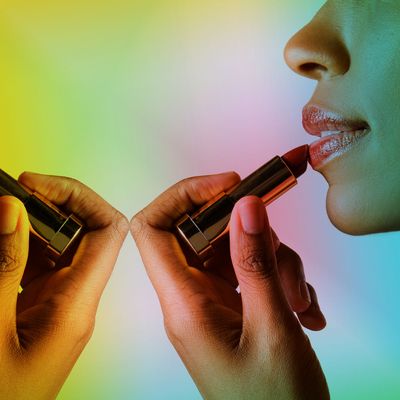
In the Black Church tradition, there’s an adage: “You don’t look like what you’ve been through.” It means that despite whatever trials and tribulations you’ve faced, God has preserved your countenance. In other words, you look good for having been ill, grief-stricken, unemployed, impoverished, or just broke enough for it to potentially show. But keeping up appearances can be tricky when money is tight, which it tended to be in the congregations I belonged to. So we would turn toward a single tubular remedy: lipstick.
Faith, finance, and fashion were close-knit in my church community. We brought our tithes and offering to each service, believing that whatever economic struggles we might face would be mitigated by our generosity. And of course, we also wanted to look impressive as we gave. When it was time to make our contributions, we rose, row by row, and walked up to the front of the church where ushers held containers to collect our checks and cash. This meant, however briefly, each one of us was the center of attention, as visible to the rest of the congregation as the pastor himself.
All flaws were clocked: a run in your pantyhose, a pilled patch on the shoulder of a blazer, or — heaven forbid — a stain on your dress. But flawlessness was also clocked: new shoes, a designer bag, a belted dress that cinched a newly trimmed waist. Wardrobe would always be important, but a woman’s expression as she parted with her offering envelope was equally essential. Another church adage: “God loves a cheerful giver.” Ideally, a face should be full of joy when you give an offering during Sunday service.
Some weeks, this was hard, especially for single-income, mother-led homes like mine. But my mother was beautiful at church, aglow when it counted. Though I’m certain her relationship with God had a lot to do with it, so did her pre-church makeup routine. She spent about 20 minutes reaching herself at the mirror: foundation, powder, eyeliner, mascara, and then finally, the centerpiece: her lipstick.
Mom never spent too much on lipstick. She was pragmatic about it. I remember her experiencing lean times when I was a kid — forgoing new church clothes so I could have them, wearing shoes long past their expiration date so that I could size mine up — but I never recall her running out of lipstick. With the right lip color, something vibrant like reddish-orange or rich like bronze or gold, she looked cheerful no matter what her checkbook was doing.
Entire generations have enjoyed the small pleasure of looking better than what they’re going through, thanks in part to the Lipstick Effect. This term, coined just after the Depression Era, first referred to an uptick in lipstick and other cosmetic sales between 1929 and 1933. Since then, the Lipstick Effect has been a consistent trend in times of economic decline. Evidence of that can be found in church pews across the country, any Sunday of the year.
Buying lipstick even in my leanest of times is a habit I’ve inherited. When I’m broke, as I have been for much of this year; when I’m grief-stricken, as I was last winter when I lost my favorite uncle, who always made a point of telling me how beautiful he believed I was; or when my skin is rebelling against me with dark marks or cystic acne, lipstick helps me counter my insecurities. I have a few reliable shades: a deep scarlet, a metallic fuchsia, a pinkish-matte that serves — when mixed with a brown lipliner — as an acceptable nude. And I know that no matter what my finances are doing, I’ll always be able to replenish them, because none costs more than $6.
Sometimes, my mother and I trade beauty secrets. She offers me suggestions on what lip color might look best on me, now that, at 38, I’m a woman approaching middle age. Sometimes, cost is part of the conversation. This is a detail we will only admit to ourselves: buying everything we need to maintain a cheerful, life-challenge-free look can feel impossible when there’s so little expendable income to devote to it. Sometimes, foundation has to be skipped. Other times, eyeliner must be forgone. But lipstick can always be re-upped, and in decent supply. When all else fails, we can still apply our chosen hues on Sunday morning, and when we turn to our neighbors in the pew and smile, we won’t look like what we’ve been through.




